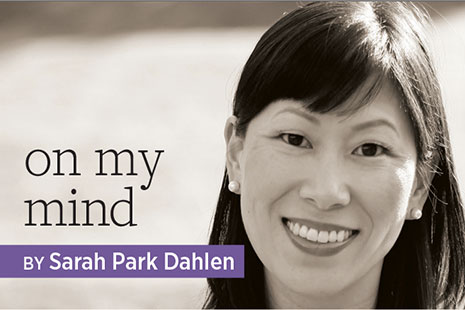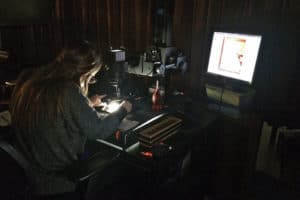
On November 9, like millions of other Americans, I woke up to news of our election results and was stunned, devastated, and afraid. Stories of hate crimes began to pour in: people painting swastikas on walls, yanking hijabs off Muslim women, and shouting at nonwhite pedestrians to “go back to where you came from.” In my own Minneapolis suburb, high school students found hateful messages graffitied across a bathroom door—“whites only” and “go back to Africa.”
This is a climate in which we now all live. This is the climate in which my husband and I are raising our 3-year-old daughter, a Korean American, in a city that is 83% white and 8% Asian. Currently, 96% of Minnesota’s K–12 educators are white. Across the country, librarianship is 88% white.
What do these numbers mean for teaching equity and justice to young people? What do they mean for our libraries? At the Association for Library Service to Children’s (ALSC) community forum on diversity, inclusion, and support for youth held in December 2016, children’s librarians shared the work they do in providing diverse collections and programming. Many librarians agreed that #WeNeedDiverseBooks, and especially books written by #OwnVoices that put characters of different races and ethnicities, religions, orientations, and abilities in a variety of circumstances, settings, and time periods.
“Children need literature that serves as a window onto lives and experiences different from their own, and literature that serves as a mirror reflecting themselves and their cultural values, attitudes, and behaviors,” wrote Rudine Sims Bishop, author and professor emerita of education at Ohio State University. Diverse books ensure that children like my daughter see themselves in the books they read, and that her white classmates see her too.
Diverse books give readers opportunities for mirror and window experiences.
Participants in the ALSC forum also lamented a lack of diversity among library staffs, and the Diversity Baseline Survey that I conducted with Lee and Low Books in 2015 demonstrates that the majority-white publishing industry proportionally reflects the whiteness of children’s literature. If our professions are mostly white, how should we best serve both very diverse and less diverse communities? All librarians, regardless of their community’s demographics, must proactively collect and promote diverse books so that all readers have opportunities for mirror and window reading experiences. This is critically important to bursting personal network bubbles at a time when the Public Religion Research Institute reports that most white people spend time only with other white people. But this is also a groundwork we need to prevent white supremacy from becoming normalized.
LIS professionals have our work cut out for us: Diversify everything. My colleagues and I work hard to weave social justice and diversity into our classes and programs, to prepare ourselves and our students to be actively inclusive professionals. What else can we as librarians and educators do?
- Continue researching, teaching, and discussing social justice, equity, whiteness, and antiracism.
- Make sure our associations and affiliate organizations provide programs and trainings that push us to think inclusively.
- Be discerning and deliberate about the books and other media we purchase, program, and promote.
- Put pressure on the publishing industry to recruit and support diverse staff and publishing diverse voices—not just diverse books.
- Intentionally seek out, mentor, support, and publish #OwnVoices.
- When experiencing resistance to diversifying collections, refer administrators or stakeholders to the ALSC Competencies, the Young Adult Library Services Association’s “Future of Library Services for and with Teens” report, and the American Library Association’s Core Values: “We are committed to providing a full spectrum of resources and services to the communities we serve.”
We should all hold each other accountable. The future depends on us.


